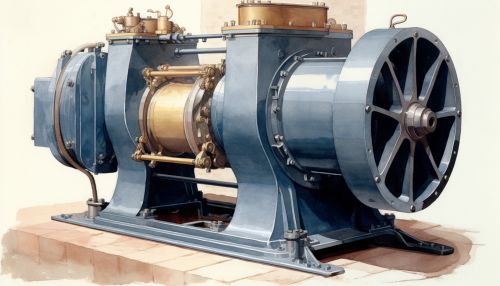History of the Electric Motor
Early Developments
The history of the electric motor begins in the early 19th century. The first electric motors were simple electrostatic devices described by Scottish monk Andrew Gordon in the 1740s. The theoretical principle behind production of mechanical force by the interactions of an electric current and a magnetic field, Ampère's force law, was discovered later by André-Marie Ampère in 1820.


The conversion of electrical energy into mechanical energy by electromagnetic means was demonstrated by the British scientist Michael Faraday in 1821. A free-hanging wire was dipped into a pool of mercury, on which a permanent magnet (PM) was placed. When a current was passed through the wire, the wire rotated around the magnet, showing that the current gave rise to a close circular magnetic field around the wire.
Direct Current Motors
The first commutator DC electric motor capable of turning machinery was invented by British scientist William Sturgeon in 1832. Following Sturgeon's work, a commutator-type direct-current electric motor made with the intention of commercial use was built by the American inventor Thomas Davenport, which he patented in 1837.
The motors ran at up to 600 revolutions per minute, and powered machine tools and a printing press. Due to the high cost of primary battery power, the motors were commercially unsuccessful and Davenport went bankrupt. Several inventors followed Sturgeon in the development of DC motors but all encountered the same battery cost issues.
Alternating Current Motors
The invention of the alternating current (AC) motor is attributed to Nikola Tesla. In 1887, Tesla filed for a patent on an AC motor that included a new type of transformer, now known as the "Tesla transformer". This motor was the first to allow for the use of AC power, which could be transmitted over long distances, unlike DC power.


Tesla's AC motor, and the transformer that it used, were both incorporated into the design of the AC power systems that are still in use today. The AC motor was a significant step in the development of electric power, as it allowed for the widespread use of electricity in both homes and businesses.
Modern Developments
In the 20th century, electric motors became significantly more diverse and complex. Developments in materials technology and electrical engineering led to new types of motors, such as the brushless DC motor, the stepper motor, and the linear motor. These motors found uses in a wide variety of applications, from computer hard drives to electric cars.
